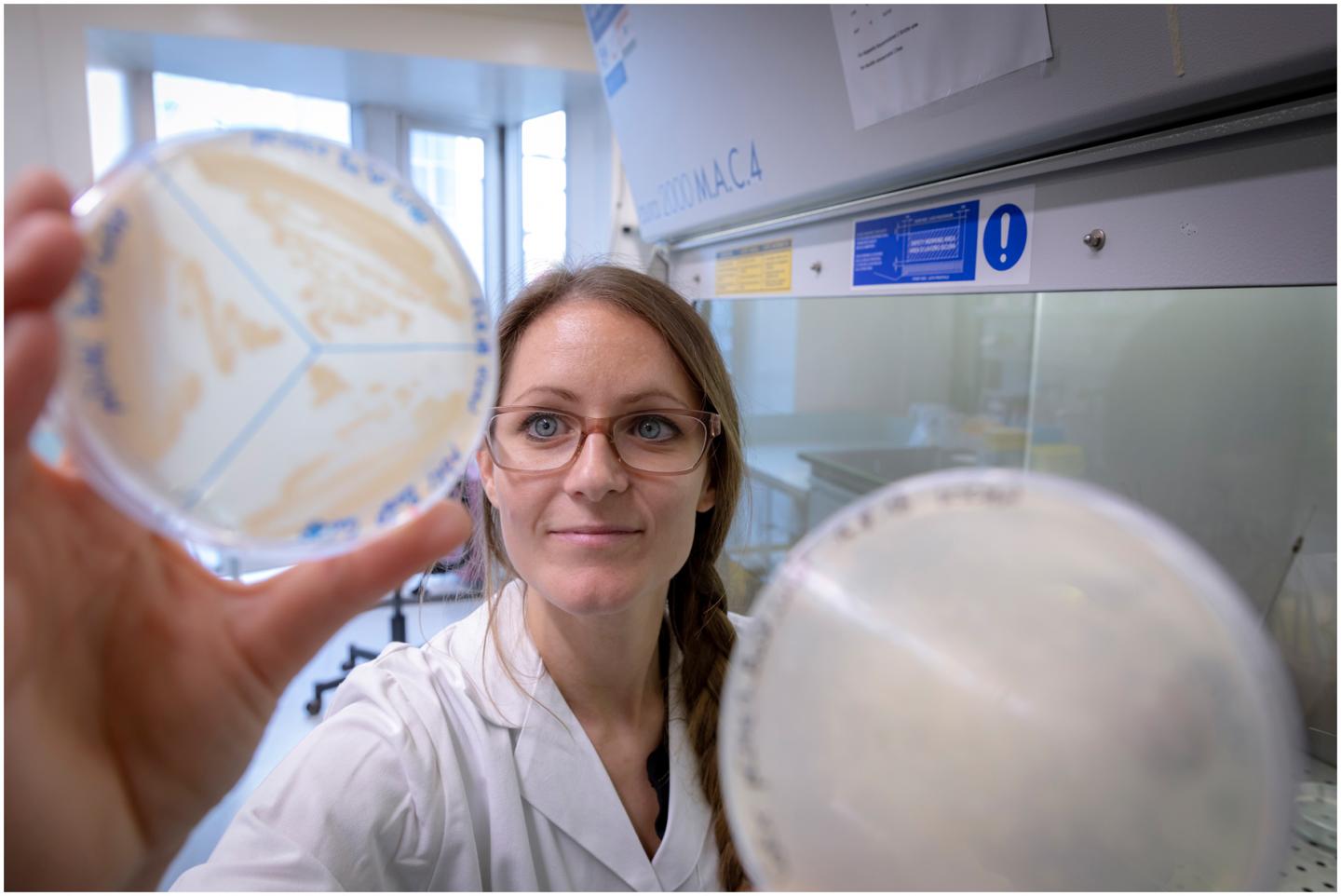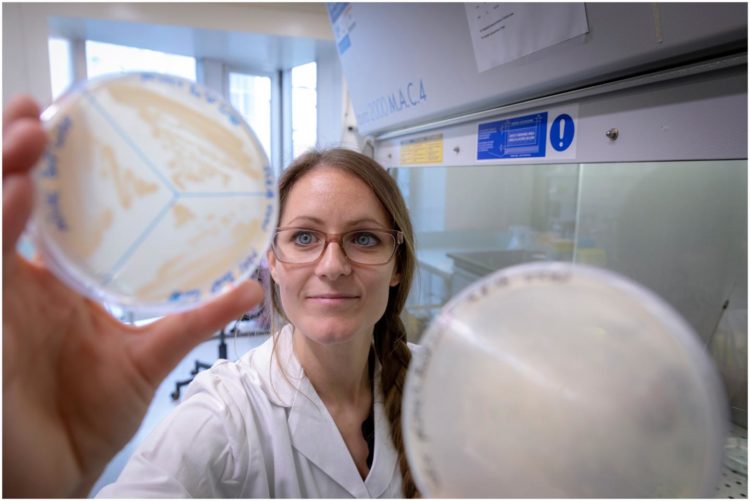
Credit: Lunghammer – TU Graz
In every weather situation, plants need to be robust and flexible at the same time. These structural properties come from its cell wall: It’s responsible to keep the plant in shape, to compensate its osmotic pressure and to protect it against pathogens e.g. bacteria, viruses or fungal attacks. The cell walls of plants are largely built from polymers and – the polysaccharide – cellulose. As a linking agent, polysaccharides have the important task to connect long-chain polymers and to build a molecular network of tiny strands, called fibrils. Those contribute to the tensile strenght of the plant.
One of the sugar building blocks is the branched-chain monosaccharid Apiose, derived from the latin word „Apium”, a plant genus, to which celeriac and parsley are part of.
„Apiose is preoccupying the Plant Biochemical Research for more than a hundred years, since its function in plants has not yet been fully understood. Besides, the mechanism, which is responsible for the production of Apiose in nature, was still not known”, tells Bernd Nidetzky, CSO of the Austrian Centre of Industrial Biotechnology (acib) and Director of the Institute of Biotechnology and Bioprocestechnology at the Technical University of Graz, Austria.
One enzyme, four steps
acib and TU Graz together with the Universities Pavia (Italy) and Barcelona (Spain) discovered, how Apiose is produced by a single enzyme called UAXS(UDP-apiose/UDP-xylose Synthase). For the first time, the scientists were able to decode the entire mechanism of this enzyme. These groundbreaking discoveries were published in the prestigious journal Nature Catalysis. „Isolated from the cress Arabidopsis thaliana, the catalyst possesses special properties: Whereas most biosynthetic processes for the manufacturing of complex molecules need several reaction steps, the UAXS-enzyme selectively catalyzes four reaction steps”, Nidetzky reveals. By doing so, the enzyme is able to break down organic carbon compounds as well as to establish new molecular compounds. This results in the change from an six ring sugar molecule (Hexose) to a structural converted five ring sugar (Pentose). By creating new organic carbon compounds, the enzyme is responsible for giving plants their strenght properties.
The elucidation of the encymatic mechanism of Adipose was able due to the interdisciplinary collaboration from the research areas enyzmology and biocatalysis, structural biology and molecular modelling.
New insights in the capabilities and uses of enzymes
The unusual and highly complex reaction sequence of Apiose biosynthesis enables the enymologists new, fascination insights into the molecular evolution of higher plants and gives information about how certain enzymes are able to coordinate multi step processes, leading to a final product. Nidetzky: „By understanding the biogenesis of the carbohydrate Apiose in plants grants us the basis for future industrial applications, for instance the production of valuable sugar molecules for possible products e.g. fine chemicals or novel biopharmaceuticals.”
###
Original publication: “Deciphering the enzymatic mechanism of sugar ring contraction in UDP-apiose biosynthesis”
About acib
The Austrian Centre of Industrial Biotechnology (acib) develops new processes for industry (the biotech, chemistry and pharmaceutical sectors) that are more economically friendly and economically efficient. In its work, the centre of competence takes nature and its methods as a role model and uses nature’s tools. acib, a non-profit organisation, is an international research centre for industrial biotechnology and operates institutions in Graz, Innsbruck, Tulln, Vienna (AUT), Bielefeld, Heidelberg and Hamburg (GER) and Pavia (ITA), Canterbury (NZL) and Taiwan (CHN). 150+ universities and companies are part of this partnership cooperation, including renowned representatives such as BASF, DSM, Sandoz, Boehringer Ingelheim RCV or Jungbunzlauer.
250+ acib researchers and scientists are currently involved in more than 175 research projects.
The owners of acib are the universities of Graz and Innsbruck, Graz University of Technology, the University of Natural Resources and Life Sciences, Vienna (BOKU) and Joanneum Research. acib is funded as a K2 research centre within the framework of COMET (Competence Centres for Excellent Technologies) by the Austrian Ministry for Transport, Innovation and Technology, the Austrian Ministry of Education, Science and Research, and the provinces of Styria, Vienna, Lower Austria and Tyrol. The COMET programme is managed by the Austrian Research Promotion Agency (FFG).
Contact for scientific information
Univ.Prof. Dipl.-Ing. Dr.techn. Bernd Nidetzky
CSO acib; Director of the Institute of Biotechnology and Bioprocestechnology at TU Graz
Phone: +43 316 873 8400
E-mail: [email protected]
Press contact
Martin Walpot, MA
Austrian Centre of Industrial Biotechnology (acib)
Head of Public Relations and Marketing
Phone: +43 316 873 9312
E-Mail: [email protected]
Media Contact
Martin Walpot
[email protected]
43-316-873-9312
Related Journal Article
http://dx.






